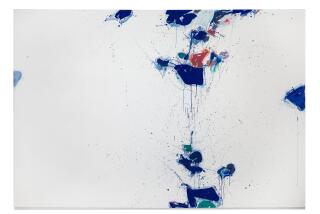Edo Art Gained Status With Rise of the Samurai
- Share via
Edo paintings like those in the Shin’enkan collection, broadly considered the most outstanding assemblage of the period outside Japan, were not always treasured.
Produced from 1615 to 1868, they are delicate and lovely paintings on large paneled screens and silken scrolls, some of them depicting brightly colored animals and others subdued pastel flowers.
Named for the city that is now Tokyo, the long-neglected 17th-Century art was produced by the merchant class then considered “base, uneducated and interested solely in the ‘misdeed’ of profit,” wrote Joe Price, owner of the Shin’enkan collection and Edo art expert.
In the book “Masterpieces from the Shin’enkan Collection,” Price describes the period of Edo art as a time when the samurai, who lacked the education of prior ruling classes, gained power--and with that, influence over the arts.
“They decorated their gloomy castles with the glitter of gold--gold that reflected the thin light filtering through the heavy shutters, gold that reflected the shimmer of lamps and candles,” Price wrote. “The samurai built their capital where Tokyo now stands and called it Edo. Believing that society could be protected from change, they closed the ports of Japan to the outside world. In such a state of seclusion, Japan was able to recover from the devastation of its civil wars and begin a 250-year-long period of unprecedented peace and internal development.” This was the age of Edo.
During this period, artists resumed an art “that was peculiar to their heritage,” Price said. “. . . What they developed was an art form unique in content and style, an art form purely Japanese.”
Recently retired museum director Earl A. Powell III called Edo “the most innovative period of Japanese painting.”
More to Read
The biggest entertainment stories
Get our big stories about Hollywood, film, television, music, arts, culture and more right in your inbox as soon as they publish.
You may occasionally receive promotional content from the Los Angeles Times.









